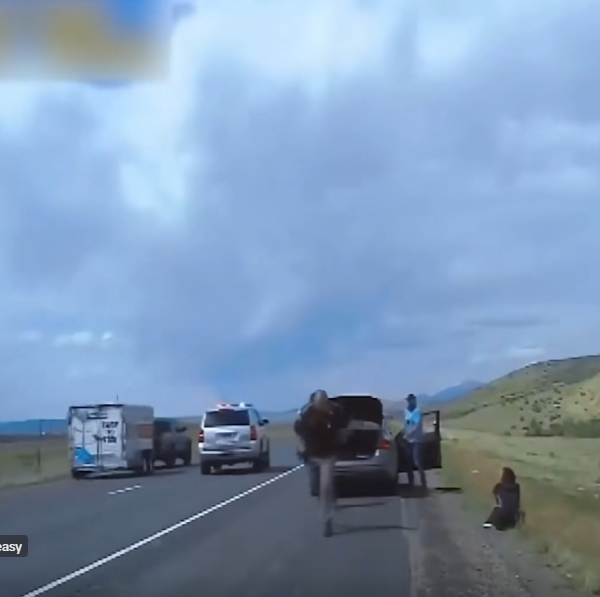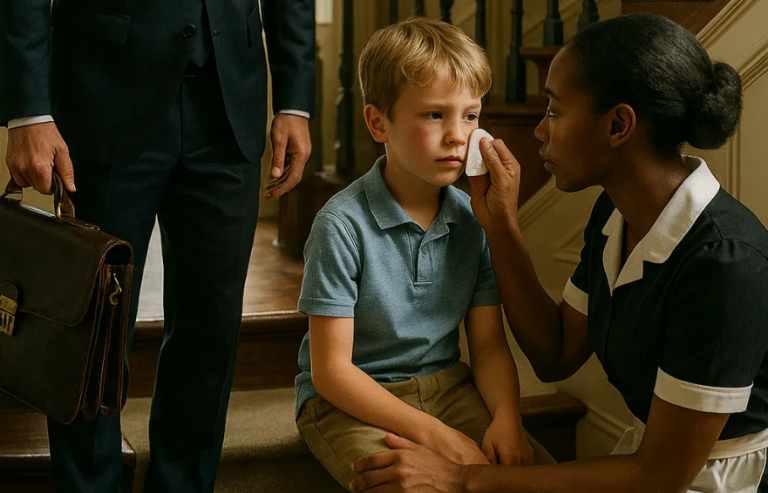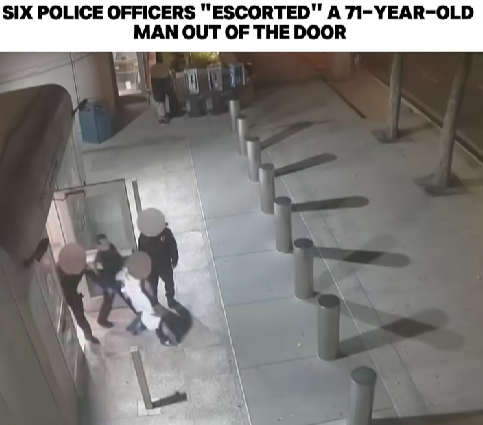
The suspect at the center of the incident was a 32-year-old man with a violent history. He had previously opened fire on police during an arrest, was taken into custody, and later released on bail. After being released, he went straight back to committing crimes.
During one of those stops — a traffic stop on a Utah highway — officers pulled him over for speeding. Unaware of his full criminal background, police allowed him to sit in the patrol vehicle without handcuffs. Three officers were at the scene: two searching his car and one speaking with a female passenger.
Inside the suspect’s vehicle, officers later reported finding around nine pounds of illegal substances, a 9mm handgun, and a large quantity of controlled pills.
That should have been the end of it.
Instead, it’s where everything exploded.
While the officers were distracted, the suspect quietly started the engine of the police vehicle he’d been placed in. Within seconds, he sped off in the stolen patrol car — a K9 unit vehicle — with a police rifle inside.
“Hey, he’s taking your car!” one officer yelled, as the others realized what had just happened and ran after the vehicle.
Dispatch went hot. Officers radioed in that they were now in pursuit of a suspect driving a police vehicle with department weapons inside — and with a civilian also in the car. That turned the chase from serious to critical.
Part II: Pursuit and gunfire
The chase crossed multiple roads at high speed. Over the radio, pursuing officers requested permission to continue and asked dispatch to activate a remote steering lock system in an attempt to disable the stolen police unit.
The stolen patrol car finally came to a stop near an exit, at a roadside intersection by a stop sign. Guided by GPS, backup units swarmed the location.
That’s when everything got worse.
As officers tried to box in the vehicle, the suspect opened fire from inside the stolen police car using the department rifle he had taken. Multiple rapid shots were fired toward officers, forcing them to duck behind their own cruisers for cover.
“He’s got a gun!” an officer shouted. “Shots fired!”
Officers returned fire while trying to keep distance. The rifle’s stopping power meant they couldn’t safely close in with only handguns; it was too easy for the suspect to out-range them.
Then, in the middle of an active gun battle, a civilian SUV unknowingly pulled right up to the suspect’s location.
Part III: Hostage attempt
What happened next could easily have turned into a murder on camera.
The suspect rushed the white SUV and attempted to carjack it. According to police records, the driver was a young woman and her boyfriend was in the passenger seat. They had no idea they had driven into an active armed standoff.
Witnesses and officers later said the suspect pressed the rifle to the driver’s head and threatened to shoot if she didn’t get out. In a split-second move, the boyfriend grabbed the barrel of the gun, creating just enough distraction for the driver to hit the gas and escape.
As the SUV fled, the suspect opened fire on it.
Officers immediately broadcast: “He’s attempting to steal a civilian’s vehicle. He has the county’s rifle.”
This was now not only a pursuit case — it was an attempted armed kidnapping under live fire.
Part IV: The standoff
With shots still being exchanged, officers tried to reposition. But communications were breaking under pressure: one officer had lost access to his primary radio, which remained in the car closer to the suspect. They were relaying positions, calling out movement, warning approaching drivers to turn around, and trying to keep civilians out of the kill zone.
Backup poured in. The suspect, injured but still mobile, tried to hold his position behind the stolen patrol car as officers shouted commands:
“Put the gun down!”
“Show me your hands!”
He refused.
One officer confirmed over the air, “I hit his leg,” after the suspect was shot in the thigh. The injury slowed him, but it did not stop him from firing.
For roughly half an hour, the situation remained volatile. The scene locked down. Traffic was blocked. Officers tried to contain him while avoiding a crossfire that could hit passing motorists.
Finally, Utah State’s SWAT team arrived with armored vehicles. They formed a perimeter and advanced methodically.
The suspect tried to run toward a nearby riverbank, but SWAT units quickly overwhelmed and captured him after a short foot chase. He was taken into custody alive and treated for his gunshot wounds. A male civilian — the boyfriend in the white SUV — had been shot in the thigh while protecting the driver.
Police later identified the suspect as James Clan. He was charged with multiple serious felonies, including aggravated robbery, intentional assault causing serious bodily injury, theft, and unlawful possession of firearms. According to court records, those charges carried a possible sentence of up to 25 years.
Officers later described it as one of the most reckless police vehicle thefts and gunfights in Utah’s recent history — a moment of “one small mistake” that nearly turned into mass tragedy.
Part V: Aurora, Colorado — A separate case
The second case unfolds in Aurora, Colorado, on the evening of May 4, 2024.
Just before 8 p.m., Aurora police responded to a shooting. A frantic caller told dispatch that her close friend — identified as 28-year-old Jose Luis Rodriguez Banderama — had shot her in the leg inside her own home and then fled.
Body-worn camera footage from responding officers shows a chaotic, emotional scene. The victim was pale, shaking, and telling officers that she’d been chased through her own house with a gun. She said he had held a firearm to his own head at one point and that she had called 911 in fear for her life.
Officers called for medical support, cleared bystanders, and began searching the area for the suspect.
Moments later, a neighbor alerted them: “He’s back.”
Officers moved in. When they encountered Banderama again, they reported that he was still armed and attempting to flee. Commands were shouted — “Stop!” — but he ran.
Gunshots followed.
“Shots fired! We have one down,” an officer transmitted over the radio.
Officers secured his weapon, radioed for medics, and immediately began emergency care. According to later reports, two officers fired a combined 25 rounds from roughly 100 feet away. The suspect was struck multiple times — estimated between seven and ten rounds.
The suspect was transported to the hospital in critical condition but was later pronounced dead.
Aftermath and investigation
The family of Banderama later filed a lawsuit against the Aurora Police Department. They described him as caring and loyal, and claimed that he had only returned to the home to check on the woman and apologize, and that he panicked and ran when he saw officers.
Aurora police, meanwhile, held a press conference. They released portions of the body camera video, displayed a .40 caliber handgun they said the suspect was armed with, and stated that both involved officers were nine-year veterans. Both officers were placed on paid leave pending investigation.
An independent review by the 18th Judicial District’s Special Response Team was opened to determine whether the shooting was justified under Colorado law.
Public reaction split fast.
Some people argued that the officers stopped an armed, fleeing shooting suspect who had already injured a woman. Others said the gunfire was excessive and that deadly force was used too quickly.
Two scenes. Two states. Two different outcomes.
In Utah, the suspect lived — and will likely spend decades in prison.
In Colorado, the suspect died — and the courts will now decide whether the shooting was lawful.




